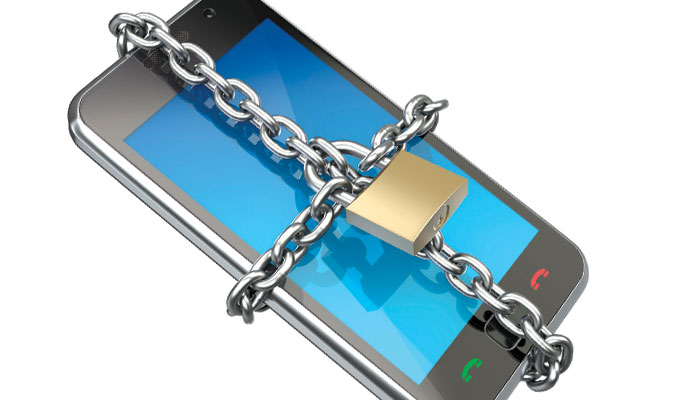All
Lock-Down Phones Ensure Compliance
by Ed Burke, Dennis K. Burke Inc.

Could a smart phone app help keep your company and drivers in compliance with federal regulations on cell phones and hand-held devices?
Like most companies, we put a written cell phone policy in place a few years ago. In short, it says that drivers, when in a company vehicle, are not to be talking on a cell phone, unless the vehicle is safely pulled off to the side of the road, or at a delivery site.
The problem was that there was no way to enforce the rule without someone actually seeing the driver talking on the phone when they shouldn’t be. We knew distracted driving was becoming a huge safety issue and we needed to get ahead of it. What we really wanted was a way to “lock down” the phones so they couldn’t be used when the trucks were moving.
Startling Statistics
There are scores of studies on the effects of distracted driving. Most of the studies show that engaging in visual-manual subtasks (such as reaching for a phone, dialing and texting) associated with the use of handheld phones and other portable devices increased the risk of getting into a crash. Others focus on how the brain processes both the phone conversation and driving at the same time.
Worth mentioning, there are a few studies that have found that headset cell phone use is not substantially safer than handheld use.
The Federal Motor Carrier Safety Administration (FMCSA) and the Pipeline and Hazardous Materials Safety Administration (PHMSA) have rules specifically prohibiting interstate truck and bus drivers and drivers who transport placardable quantities of hazardous materials from texting or using handheld mobile phones while operating their vehicles. However, drivers are allowed to use hands-free devices.
Violations can bring some hefty fines for both the company and the driver. It could also impact Safety Measurement System (SMS) scores for both the motor carrier and the driver.
Beyond the serious safety concerns, we had to look at the liability realities, too. We realized that there was a potential for someone getting into an accident while talking on the phone or texting, and how cell phone records are typically among the first thing they check when investigating major accidents.
Of course, it doesn’t limit the driver from using a personal cell phone, but at least we know they’re not talking while driving with a company-provided cell phone.
Choosing an App
By the time federal regulations came around, we had already made the decision that we didn’t want our drivers using hands-free devices. We liked the idea of locking down the phone when it was in motion, so we started searching for smart phone apps.
We looked at five or six different apps before we made a decision. The one we chose costs about five dollars a month for each phone, and requires smart phones with a data plan.
Basically, the app uses the phone’s GPS to determine when the vehicle is in motion, and then locks down the phone. The software has some great features to help fleet operators measure and manage employee use of phones while driving. While driving, the app determines if you’re stopped at a red light or arriving at your destination. If unsure, it allows the driver to press a button to let the app know that he is at his destination, which unlocks the cell phone.
We also have a white list feature on the app that allows calls from specified phone numbers to go through, even when the truck is moving. We have one phone number in our dispatch office called the hot line. It’s been programmed on all of the phones to go through, even when the truck is moving. The driver knows not to answer the call, but to pull over when it’s safe to do so, and then call back the dispatcher. So you can reach the driver when there is an emergency, or if he needs to be contacted before he gets to the next delivery site.
You can go to a website and monitor your fleet’s compliance data. It can show you things, like someone making a call while pulled over but then continuing the call while driving. It can also alert you if a driver tries to bypass or disable the application. The company also offers apps that can integrate the truck’s telematics data with cell phone usage data for a much more comprehensive risk management tool.
An Easy Transition
Our cell phone policy already prohibited drivers using their phones while driving, so the lock-down phones were a good fit with our current protocols.
At our safety meetings, if you talk about distracted driving, you get an explosion of conversations. These guys see what’s going on in traffic every day, they all know the risks that come from texting or talking on the phone while driving.
The biggest hurdle we have to tackle is personal cell phone use. Our policies cover personal cell phone use at work. We expect our drivers to follow the rules, but obviously, it’s something we can’t monitor.
For our drivers, lock-down phones provide one less distraction so they can focus on their driving.
Related Posts
 Thinking about Onsite Storage? Start Here.
Thinking about Onsite Storage? Start Here.
Posted on December 23, 2025
 100 Years of Helping Fuel Retailers Deliver!
100 Years of Helping Fuel Retailers Deliver!
Posted on August 18, 2025
 U.S. Competing to Secure Critical Minerals
U.S. Competing to Secure Critical Minerals
Posted on June 16, 2025
 The Clean Air Act, the EPA, and State Regulations
The Clean Air Act, the EPA, and State Regulations
Posted on May 14, 2025
Enter your email to receive important news and article updates.
